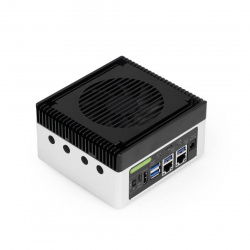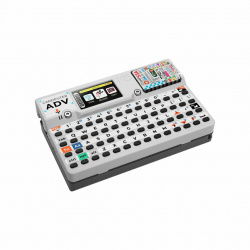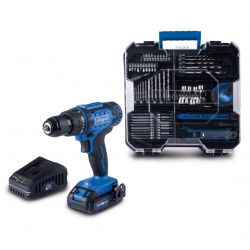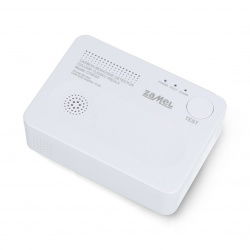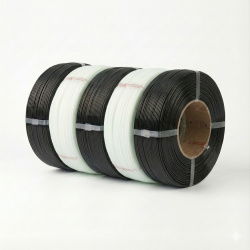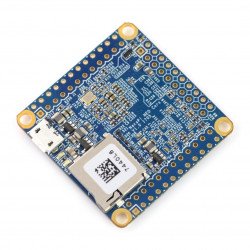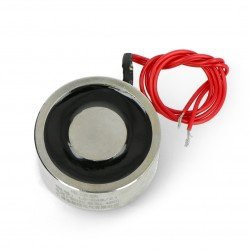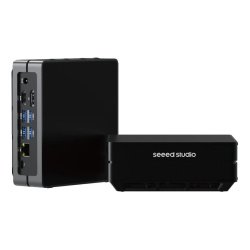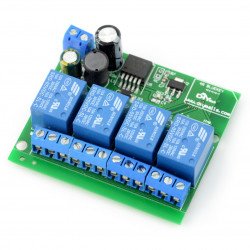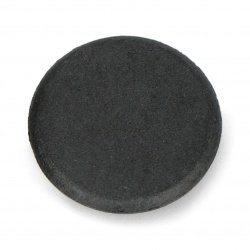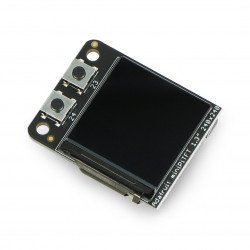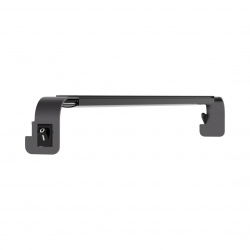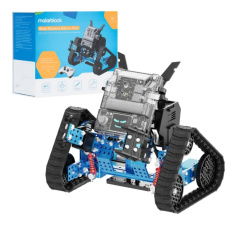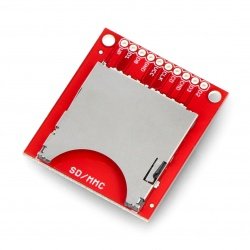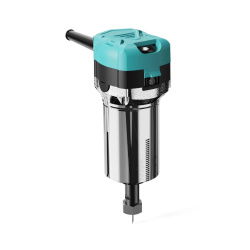- Page
- View all
- 3D print
- Minicomputers
- Electronics
- Sensors
- Robots & mechanics
- Tools & Power Supplies
- Education
- Smart Home
- Others
- 3D PRINTING
- View all
- 3D printers
- Filaments
- Filament dryers
- 3D scanners
- Creative kits for 3D projects
- Accessories for 3D printers
- Components for 3D printers construction
- 3D Pens
- CNC
- MINICOMPUTERS
- View all
- Raspberry Pi
- Arduino
- Nvidia
- Flipper Zero
- XIAO
- Odroid
- BBC micro:bit
- Other minicomputers
- PLC drivers
- M5Stack
- ESP32
- ELECTRONICS
- View all
- Computer accessories
- Automobile accessories
- Cooling
- Diodes
- Sound and acoustics
- Mounting components
- Passive elements
- Wearables (e-textiles, smart clothes)
- Cameras
- Consoles
- Memory cards & disks
- Communication
- Converters
- Electronics courses
- Microcontrollers
- Animal repellers
- LED lighting
- Programmers
- Relays
- Voltage regulators
- Artificial intelligence
- Motor drivers and servos
- Integrated circuits
- Displays and screens
- More...
- SENSORS
- View all
- Resistance sensors
- Inductive sensors
- Alarm sensors
- 9DoF IMU sensors
- Piezoelectric sensors
- Oxygen sensors
- Pressure sensors
- Twilight sensors
- Door sensors
- Hall effect sensors
- RPM sensors
- Gas sensors
- Optical sensors
- Tilt sensors
- Accelerometers
- Air quality sensors
- Sound sensors
- Gesture sensors
- Inductive contactless sensors
- Grove modules
- Gravity modules
- Limit switches
- Sensors of light and color
- Magnetic sensors
- Medical sensors
- Pressure sensors
- Sensors odbiciowe
- Distance sensors
- Weather sensors
- Liquid level sensors
- Current sensors
- Flow sensors
- Motion sensors
- Temperature sensors
- PT100 temperature probes
- Humidity sensors
- Fingerprint readers
- Encoders
- Photoresistors
- Phototransistors
- IR receivers
- Magnetometers
- Gyros
- Sensor sets
- More...
- TOOLS AND POWER SUPPLIES
- View all
- Tools
- Soldering
- Power supply
- Oscilloscopes
- Measuring instruments & devices
New products
Filament set - Rosa3D Refill PLA-CF Matt Home Decor 1,75mm 4x 1kg
- New
- Reduced price
- Pack
- Sale
- New
Pakiet filamentów Refill Bambu Lab czarno-biały PLA - 5 szt.
- New
- Reduced price
- Pack
- Sale
Promotion products
NanoPi NEO Core Allwinner H3 Quad-Core 1.2Ghz + 512MB RAM + 8GB eMMC
- Reduced price
- Sale
- Reduced price
- Sale
- Sale
- Sale
Mini PiTFT 1,3'' 240x240px screen for Raspberry Pi - Adafruit 4484
- Reduced price
- Sale
- Reduced price
- Sale
- Reduced price
- Sale
- Reduced price
- Sale
List of products by brand Dimafix
3D printing - as with any other manufacturing technology - requires not only access to the machine and material itself, but also additional accessories, tools and chemicals that facilitate or even enable the correct execution of the entire process. Although most 3D printers - especially in the amateur and semi-professional segment - are currently equipped with a table with an overlay of sheet metal (e.g. Prusa i3 MK3S) or plastic (Creality CR-10 PRO), many people are switching to printing on the glass table. Such a solution allows to obtain extremely smooth surface of the first layer, but is associated with difficulties in obtaining adequate adhesion. In such cases Dimafix products come to the rescue.
Advantages of Dimafix adhesives
For people who haven't used 3D printing adhesives before, the use of such a substance may seem like an additional problem - after all, you'll have to clean the table after each print, and removing a model with a large surface may be more difficult than usual... The reality in this case is a positive surprise. Cleaning the overlay or the table surface after using Dimafix adhesive is very easy, because the substance dissolves... in pure water - so you don't need any specialized solvents or dedicated removers. The special chemical composition of Dimafix products ensures adhesion appropriate for the current stage of work: it strongly "holds" the printout on the table surface during printing, and after finishing work it even makes it easy to remove it from the working surface.
Glue for 3D printing - how does it work?
The adhesive for 3D printing offered by the Dimafix brand is activated at temperatures exceeding 40 oC. This means that at the moment of applying the preparation to the surface of the table, the adhesion is very small, while during the heating of the working platform it starts to increase intensively, non-linearly. The manufacturer gives four zones of adhesion: the first one, below 65 oC, is used for parts that do not require strong support of adhesion of the first layer to the table. The range between 65 oCand 75 oCis the so-called second zone - recommended for parts with relatively simple geometry. From 75 oCto 95 oCextends zone three, dedicated to prints with complex geometry and large dimensions (that is long printing time). The last, fourth zone (> 95 oC) offers very high adhesion, necessary in case of difficult, many hours long printouts with complicated geometry and small area of contact between workpiece and table.
Application of Dimafix adhesives in FFF printing
Because of the working temperature range, Dimafix glue is best suited to work with felts with medium and high melting points. ABS is a perfect example, because this plastic has some unfavorable properties, which can significantly impede printing some details. For this reason the producer presents in his documentation a detailed analysis of stresses in ABS material, conducted in the finite element calculation environment on a special "test beam" model. However, Dimafix will also work well with PVA, Filaflex or HIPS felts.
Packaging options for Dimafix
In case of Dimafix products, the price is the same for both the 400 ml aerosol and the 90 ml bottle, but the two mentioned packages differ dramatically in the way the product is applied to the workbench surface. Aerosol will allow for easy glue application on large surfaces - some 3D printers, also from the amateur segment, can print parts with a base exceeding 300 x 300 mm. In such a case, even spraying on the table will allow to obtain the necessary level of adhesion in every point of the work surface. The small sponge applicator bottle, on the other hand, allows the adhesive to be applied locally - only where the workpiece adheres to the table. This can reduce adhesive consumption many times over in some applications, depending on the footprint of the most commonly printed objects.
































































































































































































































































































































